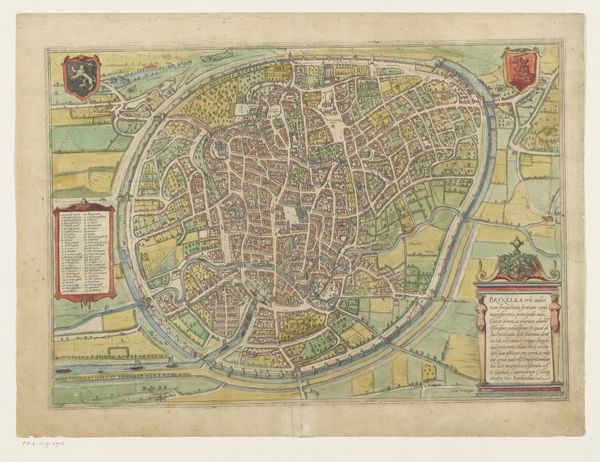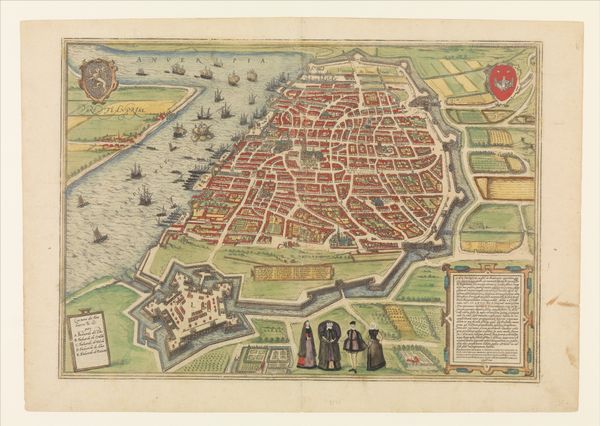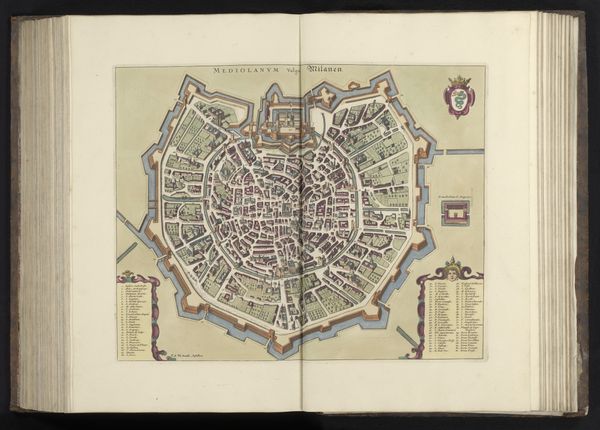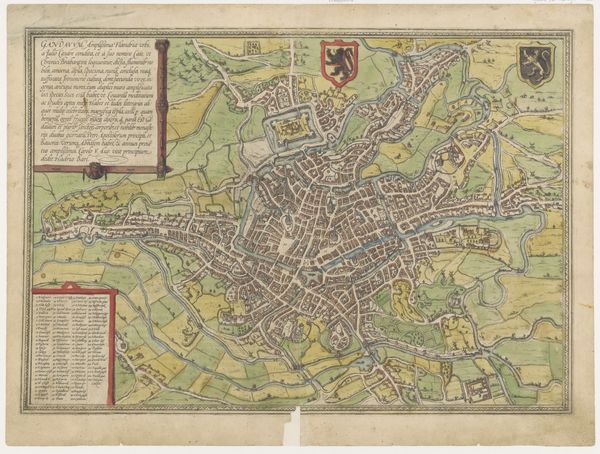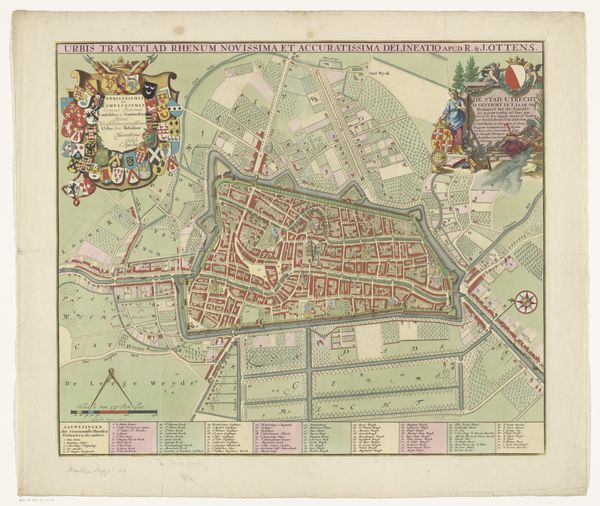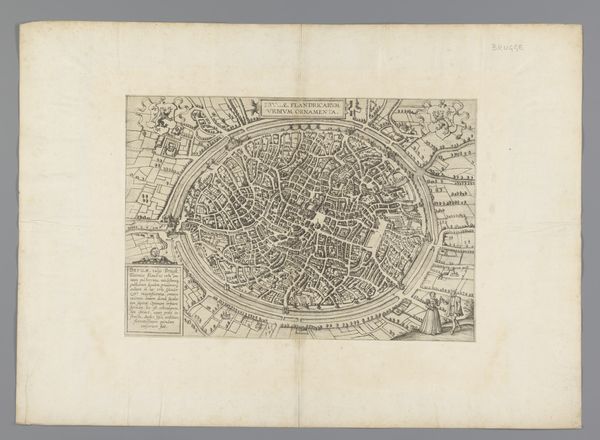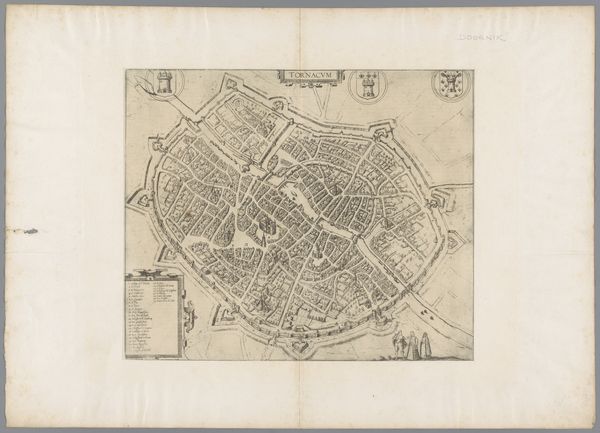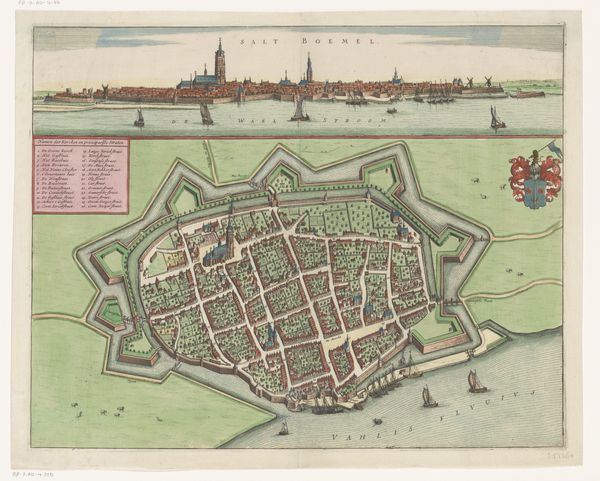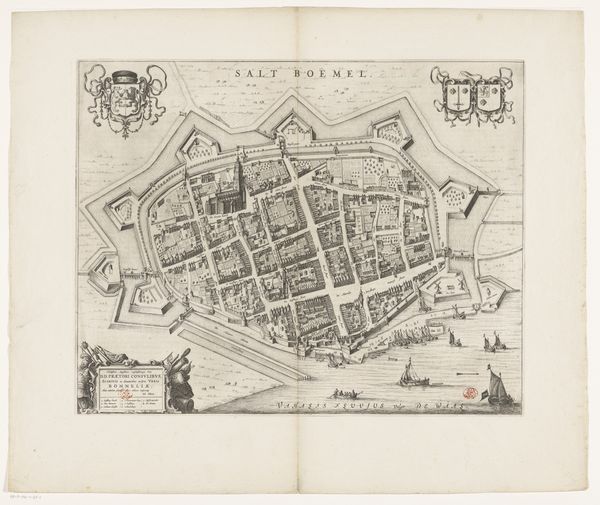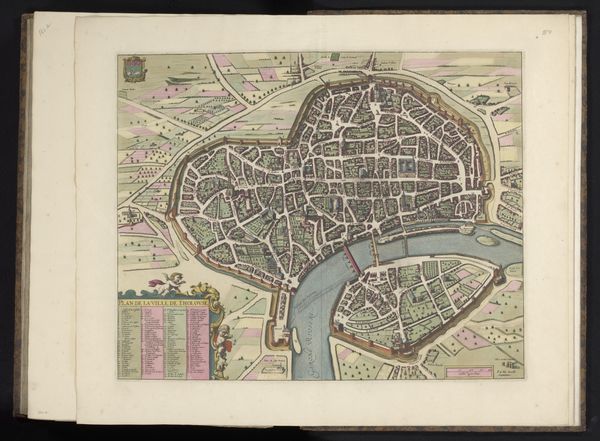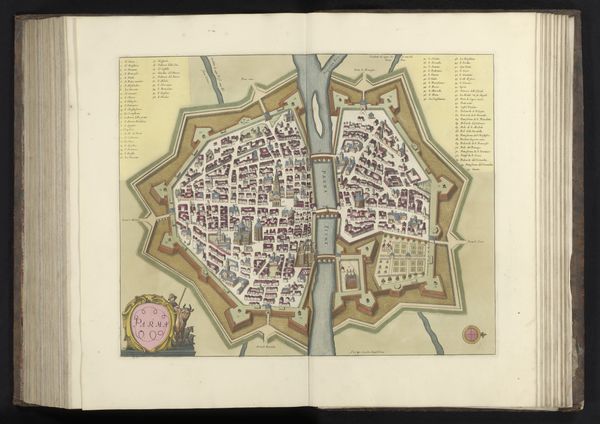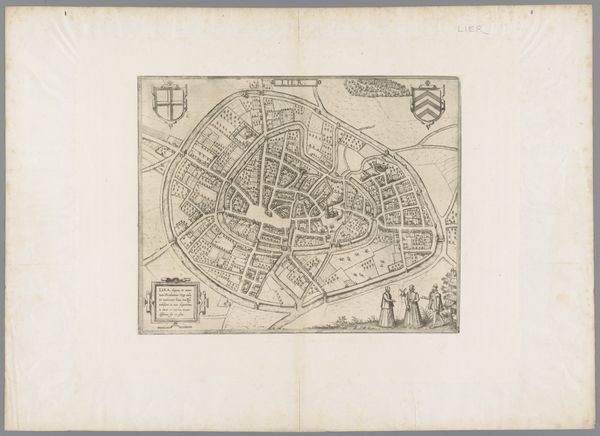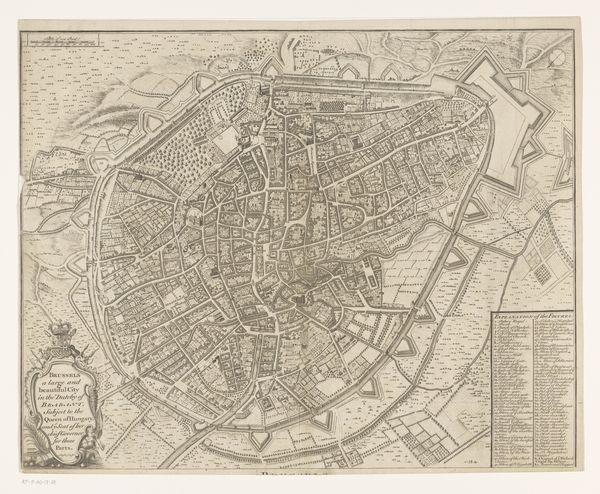
print, engraving
# print
#
perspective
#
11_renaissance
#
geometric
#
line
#
cityscape
#
engraving
Dimensions: height 319 mm, width 463 mm
Copyright: Rijks Museum: Open Domain
Editor: Here we have "Plattegrond van Brugge," an engraving from 1574 by an anonymous artist. It depicts a bird's-eye view of the city, almost circular in form. I'm struck by how this print creates an impression of order. What’s your take? Curator: The print is indeed orderly, but also reveals much about 16th-century Bruges and the cultural priorities of the time. Notice the wall encircling the city. What does that signify to you? Editor: Protection, of course! Control? Maybe power? Curator: Precisely. Cityscapes like these were powerful statements. They presented not just a geographical layout, but also a carefully constructed image of civic pride and strength. Maps weren’t just navigational tools. Editor: So, this wasn't necessarily for someone trying to find their way around, then? Curator: Possibly, but consider its display. These prints would often be prominently displayed in public spaces, or perhaps gifted to important officials. They reinforced a particular narrative: Bruges as a well-ordered, defensible, and therefore prosperous center. Consider the symbolism of the coats of arms, and their importance as claims to cultural prestige. Editor: It’s interesting how this image creates a very specific impression of the city, much like how modern PR campaigns craft an image. Is there anything surprising or unconventional about it? Curator: Note the very faint inclusion of a fashionable couple admiring the walls on the perimeter, suggesting that even they were part of the spectacle. But more significantly, I would ask: what *isn’t* shown here? How does the framing of the city reinforce particular notions of civic order and safety for potential viewers? Editor: That makes me think about the purpose and power of images in shaping public perception, even back then. It’s like a curated reality, which is definitely eye-opening! Curator: Indeed. And understanding the "why" behind its creation helps us decode its message for centuries to come.
Comments
No comments
Be the first to comment and join the conversation on the ultimate creative platform.
